Es triste el asunto. Una televisión pública se supone que cumple una cierta función social. No sé, aparte de entretener también garantizar a todos el acercamiento a la cultura. Y ese acercamiento desde un mínimo de rigor. Por tanto, es lamentable que esa televisión que pagamos todos invierta ese dinero en financiar programas como Planeta encantado. Hoy, una vez más, TVE ha demostrado que es bien capaz de coger la historia y la razón, atarlas bien fuerte a un árbol para que no escapen, y luego apalearlas sin piedad.
Si uno fuese algo más paranoico creería que es todo deliberado. No creas nada de lo que te dicen los mentirosos que afirman que esto es falso, parece ser el mensaje. Todo es posible, repiten. Mantén la mente abierta y cree, propagan. Para luego, acabar creyendo cualquier cosa y cualquier mensaje. Si los análisis científicos no tienen la más mínima validez y cualquier fantasía es igual de creíble, pues entonces cualquier cosa que nos digan en la tele puede ser verdad.
El sexto episodio de la serie ha tratado de la sábana de Turín, un trozo de tela que se nos quiere hacer creer envolvió en su día el cuerpo de Cristo, quien, para más información era además un Dios. ¿Por qué existe semejante reliquia? Pues es muy simple. Dios quería hacer desaparecer todo rastro del cuerpo de Cristo para que no se comerciase o tratase con sus restos. Curiosamente, se le olvidó llevarse el trapo.
Hay que reconocer que el «periodista» conductor del programa se inventa una historia realmente entretenida para la sábana. La hace dar vueltas por todo oriente medio, curando reyes, ocultándose por aquí o por allá, pasando de manos. Por meter, incluso mete a los templarios. Todo contado como si fuese la más absoluta y verificable verdad histórica. Daría para una novela bien chula, pero asumo que es más rentable presentarla así.
Posteriormente, todo un cúmulo de supuestas «pruebas» que demuestran la autenticidad de la sábana. Nada nuevo y que no se conozca ya. Uno pensaría que a estas alturas, los resultados del carbono catorce habrían zanjado la cuestión. Pero no, esos resultados estaban mal. ¿Por qué? Pues no se explica muy bien. Se hablan de un montón de fallos de metodología, pero no se especifica ninguno. Lo que se nos ofrece son supuestos pólenes, supuestas monedas romanas, supuestas manchas de sangre, supuestas imágenes tridimensionales y, como no podían faltar, un motón de científicos aturdidos y confundidos ante las incontrovertibles pruebas de al autenticidad de la tela. Todo dado por bueno porque sí, porque él lo dice.
Al final, unos detalles patéticos. Especifica en minutos la hora de la resurrección, tal cual como si hubiese estado presente. Y luego nos promete la vida eterna a todos nosotros -entiende que incluso a los que no creemos- porque claro, Jesús era el Dios verdadero y no hay más que hablar. Incluso se permite un momento de ciencia ficción: algún día podremos clonar a Jesús usando el supuesto ADN de la supuesta sangre de la sábana. Vamos, que corremos serio peligro de ser arrollados por una turba de jesuses clonados. También se nos da una cifra de probabilidad, absurdamente precisa, de que la imagen de la sábana no sea la de Jesús. La misma probabilidad, se nos informa, de que una piedra se convierta en pájaro y eche a volar. Me pregunto cómo habrán calculado la probabilidad de cualquiera de esas cosas.
La verdad es que en mi época de profesor de instituto hubiese usado este programa en particular como ejemplo en mis clases. Como ejemplo de cómo pensar acríticamente y cómo tergiversas y manipular la secuencia de los hechos. Y también, como ejemplo para descubrir cuando estamos tratando con pseudociencias: el uso libérrimo de energías y radiaciones. Los científicos son muy cautos cuando hablan de energía, que tiene un sentido muy específico. Pero las pseudociencias abundan en energías de todo tipo, siempre imposibles de percibir y medir, pero siempre útiles para explicar cualquier hecho. Efectivamente, la imagen de la sábana la grabó la radiación emitida durante la resurrección, emitida sólo dios sabe cómo (claro) y sólo dios sabe por qué (evidente). Y el que no lo crea, pues no es más que un vil miembro de la conspiración mundial para ocultar la verdad.
Una vez más lamento que la televisión pública invierta nuestro dinero en este programa. Si lo hiciese una televisión privada, me parecería bien o mal, pero al menos admitiría que son libres de gastar su dinero en lo que quieran. Pero cuando es una institución pública la que lo hace, creo que es legítimo pedir cuentas.
En esta ocasión, Luis Alfonso Gámez habla de la sábana por partida doble. Primero en LA CRUZADA DE LA SÁBANA SANTA (se ve que desde hace años se sabe lo que el presentador iba a deicr) y luego refiriéndose específicamente al programa de esta noche en LA SÁBANA SANTA: CUANDO TRES LABORATORIOS CIENTÍFICOS DESMONTAN EL INVENTO DE LOS VENDEDORES DE MISTERIOS.
[Estoy escuchando: «Arroro» de Jose Antonio Ramos en el disco Los Cuatro Gigantes]
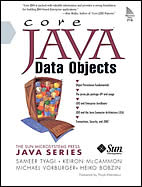 Mañana, en la Coruña, hablaré de Hibernate, una herramienta de persistencia relacional para Java. Pero por muy bueno que sea Hibernate y por mucho código abierto que sea, seguimos hablando de un API propietario. Parece que el futuro se orientará más hacia unas especificaciones estándar como JDO. Es decir, que es hora de empezar a mirárselo, y Core Java Data Objects de Sameer Tyagi, Keiron McCammon, Michael Vorburger y Heiko Bobzin.
Mañana, en la Coruña, hablaré de Hibernate, una herramienta de persistencia relacional para Java. Pero por muy bueno que sea Hibernate y por mucho código abierto que sea, seguimos hablando de un API propietario. Parece que el futuro se orientará más hacia unas especificaciones estándar como JDO. Es decir, que es hora de empezar a mirárselo, y Core Java Data Objects de Sameer Tyagi, Keiron McCammon, Michael Vorburger y Heiko Bobzin.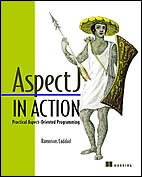 Me interesa muchísimo la programación orientada a aspectos. Al principio, la idea suena un poco rara, pero cuando la entiendes, empiezas a verle muchas posibilidades. Luego, claro, está el problema de las distintas formas de llevarla a la práctica en un lenguaje que, como Java, no tiene soporte natural para aspectos. AspectJ in Action. Practical Aspect-Oriented Programming de Ramnivas Laddad introduce la que posiblemente la alternativa más popular:
Me interesa muchísimo la programación orientada a aspectos. Al principio, la idea suena un poco rara, pero cuando la entiendes, empiezas a verle muchas posibilidades. Luego, claro, está el problema de las distintas formas de llevarla a la práctica en un lenguaje que, como Java, no tiene soporte natural para aspectos. AspectJ in Action. Practical Aspect-Oriented Programming de Ramnivas Laddad introduce la que posiblemente la alternativa más popular: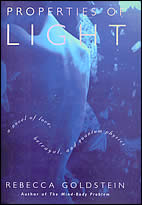 Properties of Light
Properties of Light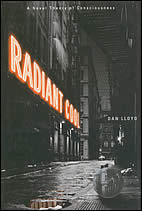 Radiant Cool
Radiant Cool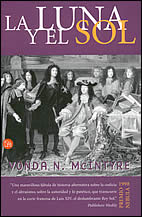 Disfruté mucho traduciendo
Disfruté mucho traduciendo